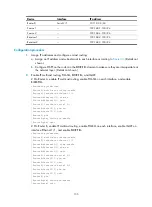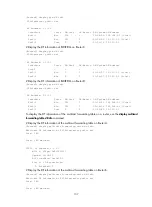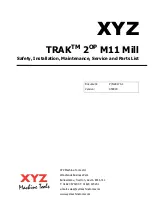
115
Configuring multicast routing and forwarding
Overview
In multicast implementations, the following types of tables implement multicast routing and forwarding:
•
Multicast routing table of a multicast routing protocol
—Each multicast routing protocol has its own
multicast routing table, such as the PIM routing table.
•
General multicast routing table
—The multicast routing information of different multicast routing
protocols forms a general multicast routing table.
•
Multicast forwarding table
—The multicast forwarding table helps guide the forwarding of multicast
packets.
A multicast routing table consists of a set of (S, G) entries. Each entry contains the routing information for
delivering multicast data from a multicast source to a multicast group. If a router supports multiple
multicast protocols, its multicast routing table contains all routes generated by multiple protocols. The
router chooses the optimal route from the multicast routing table based on the configured multicast
routing and forwarding policy and adds the route entry to its multicast forwarding table.
RPF check mechanism
A multicast routing protocol relies on the existing unicast routes, MBGP routes, or static multicast routes
in creating multicast routing entries. When creating multicast routing table entries, a multicast routing
protocol uses the reverse path forwarding (RPF) check mechanism to ensure multicast data delivery along
the correct paths.
In addition, the RPF check mechanism also helps avoid data loops.
RPF check process
A multicast routing protocol uses the following tables to perform the RPF check:
•
Unicast routing table
—Contains unicast routing information.
•
MBGP multicast
routing table
—Contains MBGP multicast routing information.
•
Static multicast routing table
—Contains RPF routes that are manually configured.
MBGP multicast routing table and static multicast routing table are
used for RPF check rather than
multicast routing.
When a router performs an RPF check, it first examines whether multicast across VPNs is enabled:
•
If yes, the router selects the VPN that the multicast source belongs to as the RPF route.
•
If not, the router searches its unicast routing table, MBGP routing table, and static multicast routing
table.
The specific process of RPF check is as follows:
1.
The router chooses an optimal route from the unicast routing table, the MBGP routing table, and
the static multicast routing table, respectively:
{
The router searches its unicast routing table by using the IP address of the packet source as the
destination address and automatically chooses an optimal unicast route. The outgoing interface
of the route is the RPF interface and the next hop is the RPF neighbor. The router considers the
















































